
The Problem with Car-Centric Cities for Community, Public Health, and More
Summary
Reflection Questions
Journal Prompt
In modern urban planning, many cities around the globe have adopted a car-centric approach, where the primary focus is on facilitating the use of private vehicles. This design philosophy emphasizes extensive road networks, ample parking spaces, and often prioritizes the convenience of driving over other modes of transportation. Such an approach has led to a range of complex issues impacting community cohesion, public health, and broader societal aspects. In this article, we delve into the multifaceted repercussions of car-centric city designs, aiming to uncover how they shape our communities, affect our health, and influence the overall fabric of society. Read on to learn more!
What is a Car-Centric City?
A car-centric city is an urban environment where the design and infrastructure predominantly cater to private vehicles. This setup often includes extensive road networks, large parking areas, and urban planning that prioritizes ease of vehicle access over other transportation methods. In such cities, daily life revolves significantly around the use of cars, often making them a necessity rather than a choice.
The consequences of this approach include high traffic volumes, increased pollution, and urban areas that are less accommodating to pedestrians, cyclists, and public transit systems. The design philosophy of car-centric cities typically results in urban sprawl, where residential and commercial developments are spread out, requiring longer travel distances and reinforcing the dependency on automobiles.
Examples of Car-Centric Cities Around the World
Los Angeles, USA

Often exemplified as the archetype of a car-centric city, Los Angeles boasts an extensive freeway system that spans across the city, accommodating millions of vehicles daily. Despite its glamorous Hollywood image, the city is infamous for its heavy traffic congestion, illustrating the challenges of a transportation system overwhelmingly reliant on private vehicles.
Houston, USA
Houston’s urban landscape is a classic example of American urban sprawl. The city lacks a comprehensive public transportation system, leading to a strong dependency on cars. This reliance is evident in its widespread suburbs, which are primarily accessible by road, contributing to Houston’s reputation for heavy traffic and air quality issues.
Fuel your creative fire & be a part of a supportive community that values how you love to live.
subscribe to our newsletter
*please check your Spam folder for the latest DesignDash Magazine issue immediately after subscription

Atlanta, USA
Mirroring Houston’s sprawl, Atlanta is characterized by its expansive suburbs and a transportation system that heavily favors car travel. This reliance on automobiles results in significant traffic congestion, impacting the daily lives of its residents. The city’s layout necessitates the use of cars for most activities, from commuting to shopping, thus reinforcing its car-centric nature.
Dubai, UAE
Known for its opulent lifestyle and rapid urban development, Dubai has traditionally been a city where private vehicle use is predominant. Despite recent efforts to enhance its public transportation system, including the development of a metro network, the city’s sprawling urban design still promotes a strong reliance on cars.
Johannesburg, South Africa
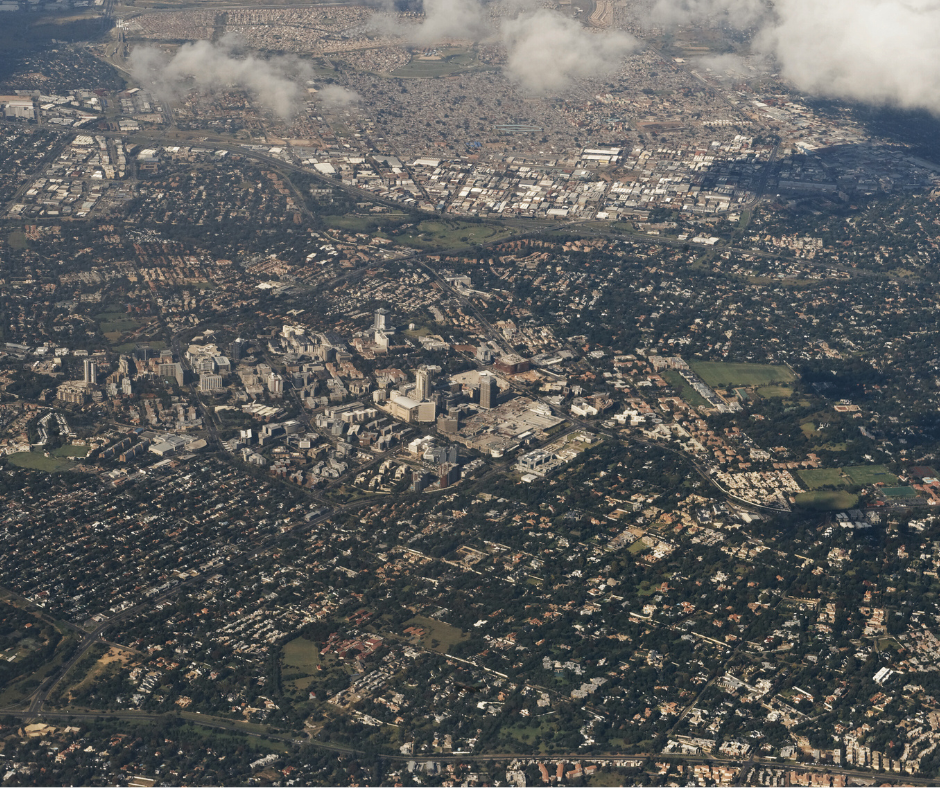
In Johannesburg, the limited public transport options and extensive suburban areas result in a high dependency on personal vehicles. The city’s layout and transport infrastructure reflect a car-centric approach, posing challenges for those without access to private vehicles and contributing to traffic congestion and related urban issues.
The Consequences of Designing, Maintaining, and Living In Car-Centric Cities
Unfortunately, car-centric cities pose a number of issues. Environmentally, they contribute significantly to air pollution and greenhouse gas emissions, exacerbating climate change and affecting air quality. These environmental issues, in turn, have a direct impact on public health; increased pollution levels lead to respiratory problems, while the sedentary lifestyle associated with car use is linked to obesity and related health issues.
There’s also a higher risk of accidents and fatalities on the road. Socially, these cities suffer from reduced community cohesion. The lack of walkability and limited public spaces hinders the vibrancy of local businesses and diminishes neighborhood interactions, eroding the sense of community.
Economically, the reliance on cars creates a divide: those unable to afford personal vehicles face significant accessibility issues, deepening socio-economic disparities. Additionally, car-centric urban planning promotes urban sprawl and inefficient land use, requiring extensive space for roads and parking at the expense of green spaces and agricultural land.
These sprawling landscapes further entrench car dependency, creating a cycle that perpetuates these various negative outcomes. Let’s take a closer look at some of the negative impacts of car-centric cities.
Impact on Community and Social Life
Car-centric cities often suffer from reduced walkability and a dearth of accessible public spaces, leading to significant impacts on community dynamics. The sprawling nature of such urban designs necessitates the use of cars for even short distances, thereby diminishing foot traffic that is vital for the vibrancy of local businesses. These businesses, especially small, locally-owned ones, thrive on pedestrian accessibility and engagement.
Moreover, the lack of communal spaces like parks and plazas in car-centric areas impedes opportunities for residents to gather, interact, and build a sense of community. This contributes to the deterioration of neighborhood cohesion, as the design of the cityscape discourages spontaneous social interactions and communal activities, integral to fostering strong community bonds.
Socioeconomic Disparities
The reliance on automobiles inherent in car-centric cities creates pronounced socioeconomic disparities. Individuals who cannot afford a car, including lower-income residents, the elderly, and the young, face significant accessibility issues. Their mobility is restricted, limiting access to essential services, employment opportunities, and social activities.
This creates a divide in the urban landscape, where mobility and access are largely dictated by one’s ability to own and maintain a car. The role of public transportation in these settings becomes critical. Efficient and accessible public transit can bridge these gaps, providing equitable mobility solutions. However, in many car-centric cities, public transportation is often underfunded and insufficient, exacerbating these disparities.
Case Studies: Cities Transitioning from Car-Centric to Community-Focused Models
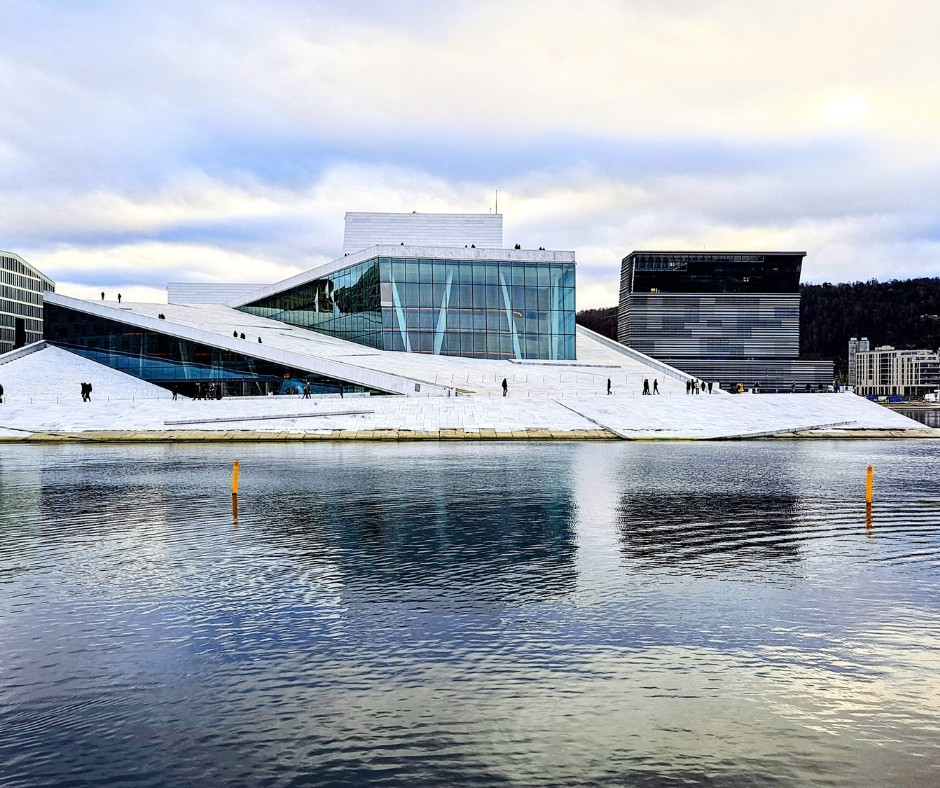
Several cities globally have recognized these issues and are actively working to transition from car-centric to more community-focused urban models. For example, Oslo, Norway, has made significant strides in reducing car usage in its city center, prioritizing pedestrian spaces, cycling lanes, and efficient public transit. As a result, the city has seen improvements in air quality, noise levels, and the vibrancy of its public spaces.
Another notable example is Copenhagen, Denmark, known for its bike-friendly infrastructure and extensive public transportation network. These efforts have not only enhanced the city’s livability but also fostered a strong sense of community, as residents engage more with their urban environment and each other. These case studies demonstrate that shifting away from a car-centric model can lead to numerous benefits for community life and social cohesion.
Public Health Concerns
The environmental impact of car-centric cities is a significant public health concern. Primarily, air pollution from vehicle emissions is a major issue, leading to an array of respiratory health problems among the urban population. This pollution is not just limited to the immediate surroundings but also contributes to broader air quality issues.
Furthermore, the reliance on automobiles significantly contributes to climate change. Vehicles are major sources of greenhouse gases, such as carbon dioxide, which are key contributors to global warming. This environmental degradation has a cascading effect on public health, affecting everything from air quality to the prevalence of weather-related health issues.
Design Your Dream Firm in Just 5 Days
JOIN THE CHAOS TO CLARITY CHALLENGE!

Physical Health Issues
Car-centric urban environments also contribute to specific physical health issues. A sedentary lifestyle is one of the most direct impacts, as reliance on cars for transportation reduces the amount of physical activity an individual engages in daily. This lack of activity is closely linked to the rising rates of obesity, a major health concern with its own set of complications like heart disease, diabetes, and joint problems.
Additionally, car-centric cities often see higher accident and injury rates due to traffic collisions. These incidents not only cause immediate physical harm but can also lead to long-term disabilities, further exacerbating health concerns in such urban settings.
Mental Health Implications
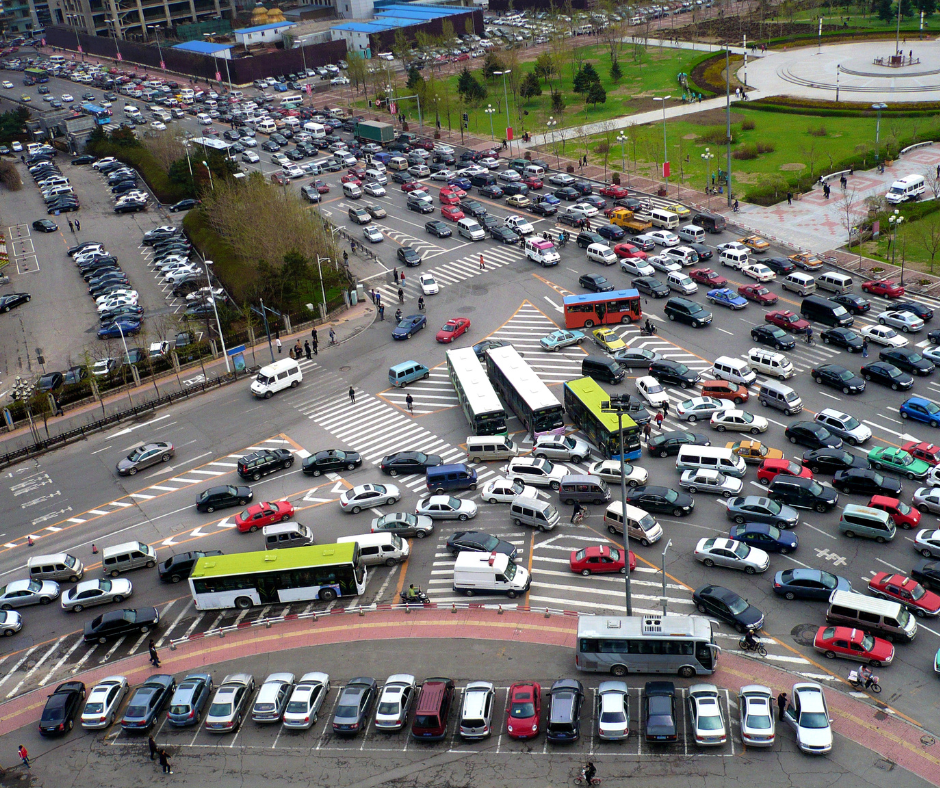
The mental health implications of living in car-centric cities are often overlooked but are equally significant. Constant exposure to traffic and the stress related to commuting, especially in congested areas, can lead to increased levels of anxiety and stress among residents. This is compounded by the often aggressive nature of driving in heavy traffic, which can exacerbate feelings of frustration and anger.
Moreover, the lack of green spaces, which are known to have a calming and restorative effect on mental well-being, is another drawback of such urban designs. Green spaces are not only areas for relaxation and recreation but also play a crucial role in providing a respite from the urban environment, contributing to overall mental health and well-being. The scarcity of these spaces in car-centric cities means residents may be missing out on these essential benefits.
Accessibility Issues
In car-centric cities, accessibility is a significant issue, especially for those who cannot drive, such as the elderly, children, and individuals with disabilities. The urban layout of these cities, with their sprawling nature and reliance on personal vehicles, poses considerable challenges for these groups.
For the elderly and those with disabilities, the absence of reliable and accessible public transportation can severely limit their independence and ability to access essential services like healthcare, grocery stores, and social activities. Children, who are dependent on adults for transportation, may find their mobility and ability to engage in extracurricular activities or access educational resources restricted. This situation can lead to a sense of isolation and dependency.
Furthermore, the lack of safe pedestrian pathways and crossings in car-centric environments further exacerbates these challenges, as it becomes difficult and sometimes dangerous for those who are unable to drive to navigate the city safely. This inaccessibility not only affects the daily lives of these individuals but also has broader implications for social inclusion and equality. The inability to access key services and participate in community life can lead to social isolation and a decrease in overall quality of life, highlighting a significant gap in the urban design of car-centric cities.
Safety Concerns
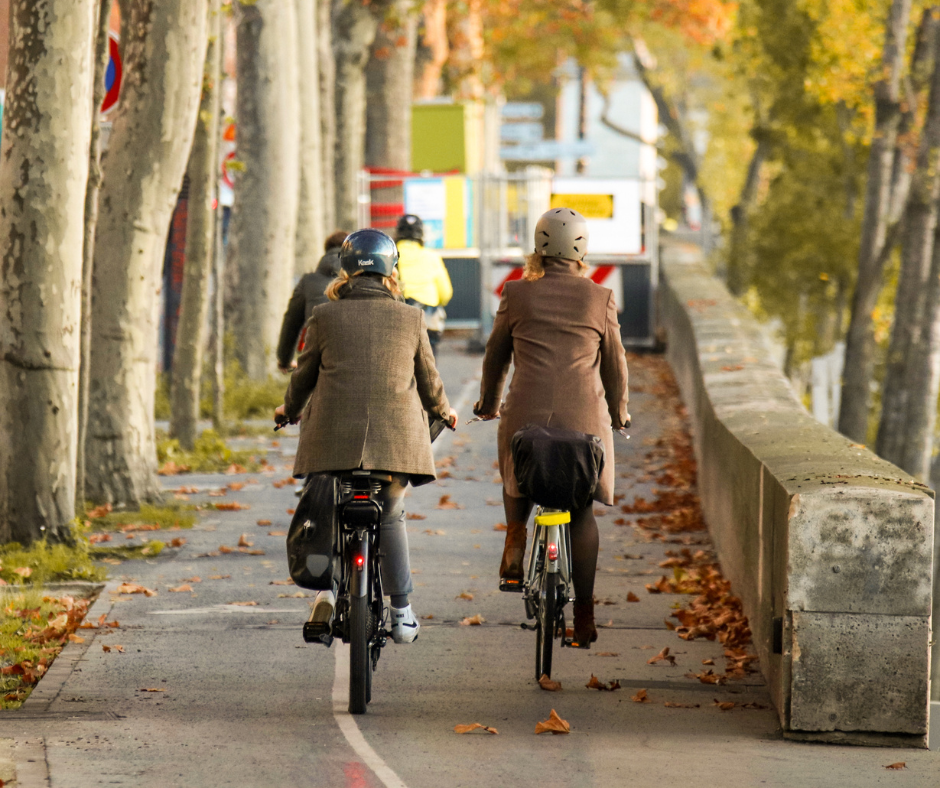
Safety concerns in car-centric cities are a significant issue, particularly due to the higher rates of car accidents and fatalities. In these urban environments, where the infrastructure and culture are heavily skewed towards vehicle use, the risks for not only motorists but also pedestrians and cyclists are considerably amplified.
The design of these cities often lacks adequate safe crossings, bike lanes, and sidewalks, leading to dangerous interactions between cars and more vulnerable road users. This situation results in a higher incidence of accidents involving pedestrians and cyclists, who are at a disadvantage when sharing the road with vehicles.
Fuel your creative fire, thrive with support from peers, & make 2025 your firm’s best year yet!
JOIN THE DESIGNDASH COMMUNITY

For motorists, the high density of traffic, coupled with complex road systems and sometimes aggressive driving behaviors, increases the likelihood of collisions. These accidents can result in serious injuries and fatalities, impacting individuals and families.
Furthermore, the psychological effects of road accidents, such as trauma and anxiety, extend beyond physical injuries, affecting the overall well-being of the community. The prevalence of these safety concerns highlights a critical need for rethinking urban design and transportation policies in car-centric cities to prioritize the safety of all road users.
Environmental Degradation
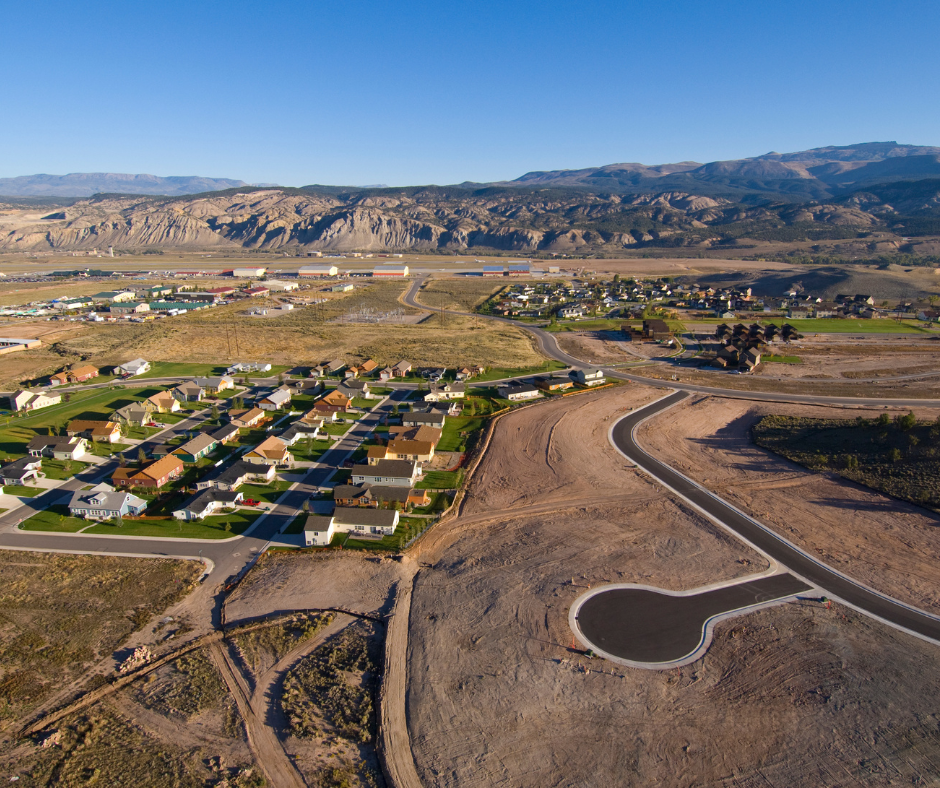
Car-centric cities are major contributors to environmental degradation, a fact that poses significant concerns. One of the most pressing issues is the increase in greenhouse gas emissions due to the heavy reliance on vehicles. These emissions are key drivers of climate change, affecting global weather patterns and ecosystems.
Besides, these cities are often plagued by noise pollution, primarily generated by the constant flow of traffic. This noise pollution not only disrupts local wildlife but also affects the quality of life of the residents.
Another critical issue is the urban heat island effect, exacerbated by the extensive use of asphalt and concrete in urban construction. These materials absorb and retain heat, leading to higher temperatures in urban areas compared to surrounding rural areas. This effect not only contributes to discomfort but also increases the energy demand for cooling, further contributing to environmental stress.
Dependence on Fossil Fuels
The design and lifestyle in car-centric cities foster a significant dependence on fossil fuels. This dependence is primarily due to the high usage of gasoline and diesel-powered vehicles, which are the lifelines of these urban settings. This reliance not only contributes to environmental issues, such as pollution and greenhouse gas emissions, but also places a strain on global energy resources.
Cities heavily reliant on cars are more vulnerable to fluctuations in oil prices, which can lead to economic volatility and insecurity. This dependence also impacts national and global politics, as cities and countries may be forced to make decisions based on maintaining their fossil fuel supply rather than prioritizing sustainable practices. This reliance on non-renewable energy sources is a critical concern, highlighting the need for a shift towards more sustainable and environmentally friendly modes of transportation and urban planning.
Economic and Infrastructure Challenges
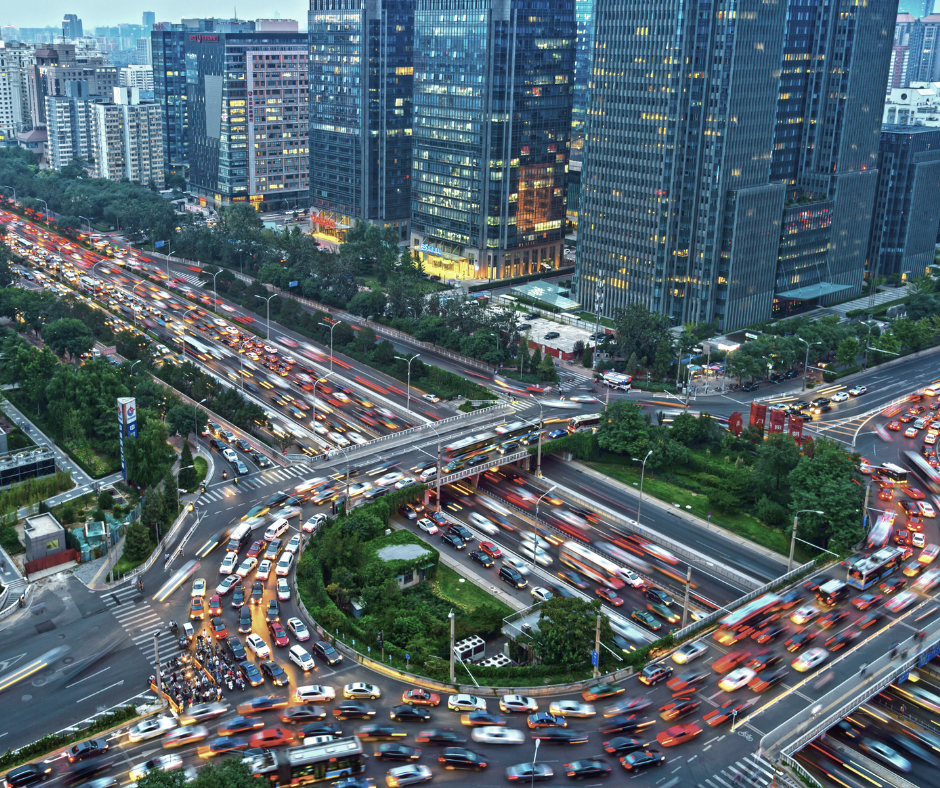
The economic implications of maintaining car-centric infrastructures are substantial. The financial burden of road maintenance and expansion is a significant aspect, often consuming a large portion of municipal and state budgets.
These costs include not only the construction and repair of roads and highways but also the ancillary infrastructure such as bridges, tunnels, and traffic control systems. When compared to investments in public transportation, the expenses for road infrastructure can be considerably higher.
Public transportation systems, while requiring substantial initial investment, often offer greater long-term economic benefits through reduced congestion, lower environmental impact, and promotion of urban density. In contrast, the continuous expansion of road networks to accommodate growing traffic tends to have diminishing returns, leading to a cycle of increasing costs and traffic congestion.
Inefficient Land Use
Car-centric cities inherently encourage urban sprawl, where residential and commercial areas spread out over large distances. This sprawl leads to inefficient land use, requiring more infrastructure, such as longer roads and utilities, to connect disparate parts of the city.
The spread-out nature of these cities also demands extensive areas for parking, further reducing the land available for housing, green spaces, or community development. This inefficiency not only has economic implications, in terms of higher infrastructure costs, but also environmental ones, as it contributes to habitat destruction and increased greenhouse gas emissions.
Impact on Local Economies and Small Businesses
The design of car-centric cities can have a direct impact on local economies and small businesses. These cities often lack a concentration of foot traffic, which is crucial for the survival of small, local businesses. Without a steady flow of pedestrians, these businesses miss out on the incidental customers that foot traffic brings.
Moreover, the dominance of large roadways and parking lots can make certain areas less attractive and accessible for shopping and leisure activities, diverting economic activity to larger, car-accessible shopping centers. This shift can lead to a decline in local businesses, reducing economic diversity and resilience. Additionally, the high costs associated with providing ample parking can be a barrier for small business owners, further affecting the economic fabric of these urban areas.
Alternative Urban Planning Models and Solutions
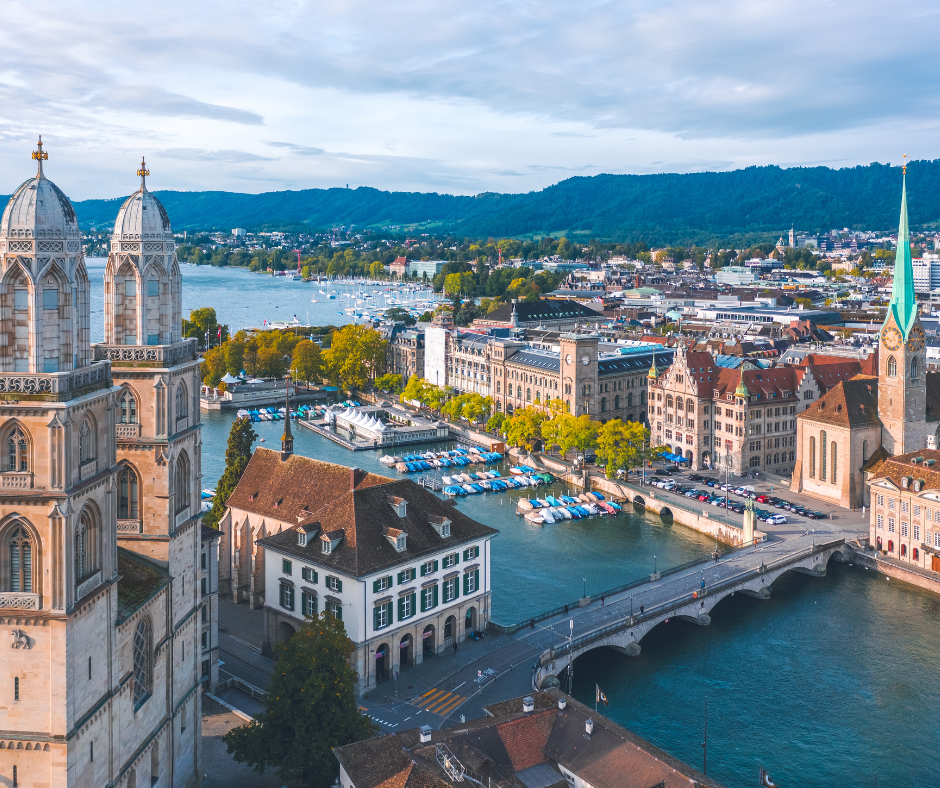
The promotion of public transportation offers a viable alternative to car-centric urban models. Efficient public transit systems provide numerous benefits, including reduced traffic congestion, lower greenhouse gas emissions, and improved air quality. Additionally, they offer a cost-effective and accessible mobility option for all socio-economic groups, enhancing inclusivity and reducing reliance on personal vehicles.
Successful implementations can be seen in cities like Tokyo and Zurich, where extensive and reliable public transport networks are deeply integrated into urban life. These systems, encompassing trains, buses, and trams, are characterized by their punctuality, coverage, and ease of use, making them a preferred mode of transport for a significant portion of the population.
Urban Planning Focused on Walkability and Cycling
Urban planning that prioritizes walkability and cycling is another effective solution. This approach involves designing cities in a way that makes walking and cycling safe, enjoyable, and convenient. Key elements include well-maintained sidewalks, dedicated bike lanes, traffic calming measures, and connectivity between different areas of the city.
Such planning not only promotes healthier lifestyles but also fosters greater community engagement and environmental sustainability. Cities like Amsterdam and Copenhagen are renowned for their bike-friendly infrastructure, where cycling is an integral part of the urban culture.
Policies Promoting Mixed-Use Development
Mixed-use development is a planning approach that combines residential, commercial, and recreational spaces within close proximity. This model encourages a more compact urban form, reducing the need for long commutes and enabling residents to walk or cycle for most of their daily activities.
Policies that support mixed-use development can lead to vibrant, diverse, and sustainable urban communities. These policies may include zoning reforms, incentives for developers, and design guidelines that prioritize pedestrian-friendly and diverse neighborhoods.
International Examples of Pedestrian-Friendly Cities
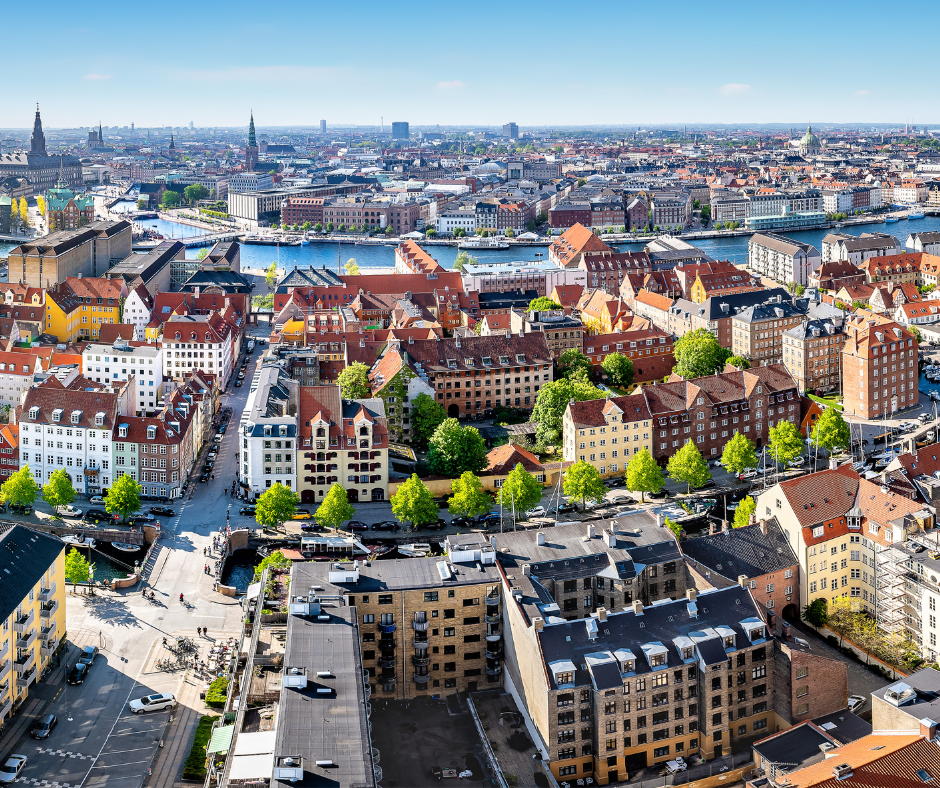
Several cities around the world serve as exemplars of pedestrian-friendly environments. For instance, Vienna is known for its well-designed public squares, extensive pedestrian zones, and efficient public transport, making it a city where walking is a pleasure.
Similarly, Barcelona’s superblock model, where traffic is minimized in certain urban blocks to create peaceful, communal spaces, highlights innovative approaches to pedestrian-centric urban design. These cities demonstrate that prioritizing pedestrians in urban planning not only enhances the livability of a city but also contributes to a stronger sense of community and environmental sustainability.
Overcoming Challenges and Resistance to Transitioning from Car-Centric Cities
Overcoming the political and economic barriers inherent in shifting from car-centric to more sustainable urban models is a complex task. Politically, there is often resistance to change, especially when it involves altering long-standing infrastructure and urban layouts.
Economic challenges include the significant investment required to develop alternative transportation systems and redesign urban spaces. To address these, a multifaceted approach is needed, involving policy changes, incentives for sustainable practices, and collaboration between government entities, urban planners, and private stakeholders.
Successful strategies often involve phased development and funding plans, ensuring that changes are economically viable and politically acceptable. Additionally, garnering political support often requires demonstrating the long-term economic, environmental, and social benefits of sustainable urban planning.
The Role of Public Awareness and Community Involvement
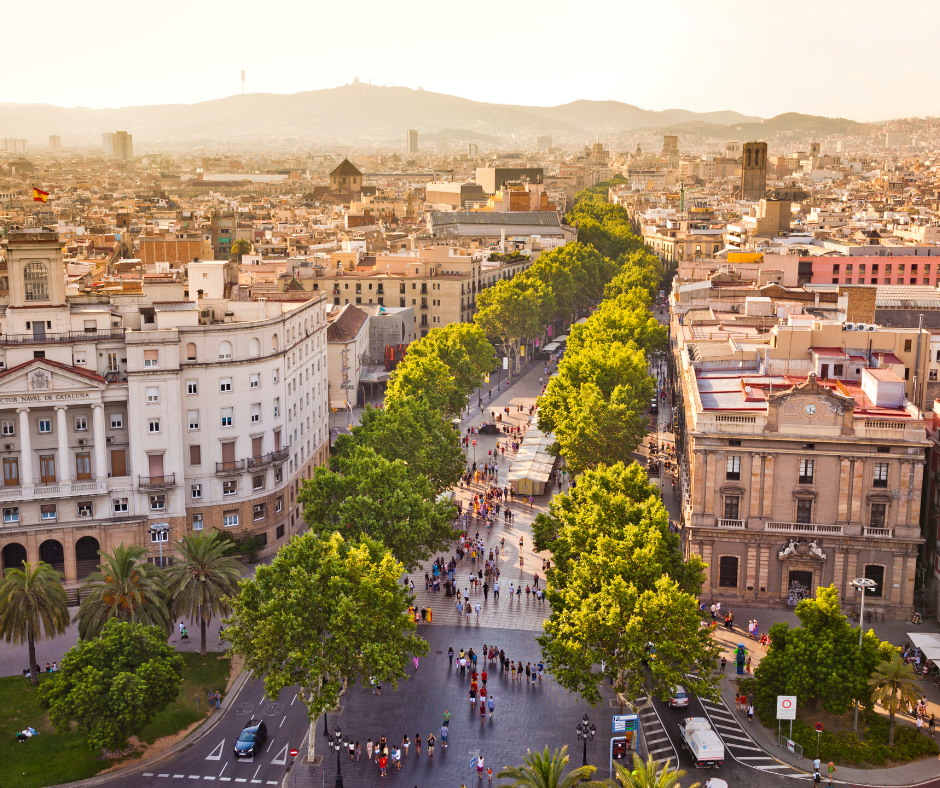
Public awareness and community involvement play crucial roles in the transition to more sustainable urban environments. Educating the public about the benefits of reduced car dependency and the importance of sustainable transportation can foster community support for these initiatives.
Engaging with communities in the planning process ensures that the needs and preferences of residents are considered, leading to solutions that are more widely accepted and effective. Community involvement can also take the form of pilot projects, public forums, and participatory planning sessions, where residents have direct input into the changes being made in their neighborhoods.
This approach not only builds support for the changes but also empowers communities, making the transition more inclusive and responsive to local needs.
Strategies for Gradual Transition
Implementing a gradual transition towards less car-centric cities is often more effective than attempting rapid, large-scale changes. This can be achieved through incremental steps, such as gradually expanding public transportation networks, progressively developing pedestrian and cycling infrastructure, and slowly implementing zoning changes to promote mixed-use development.
Pilot projects, such as temporary street closures or pop-up bike lanes, can be used to test new ideas and gather public feedback. Gradual transitions allow for adjustments and refinements based on real-world experiences, minimizing disruptions and resistance. This approach also provides time for public adaptation and acceptance, ensuring a smoother shift towards sustainable urban living.
Fuel your creative fire & be a part of a supportive community that values how you love to live.
subscribe to our newsletter
*please check your Spam folder for the latest DesignDash Magazine

Final Thoughts on Transitioning Away from Car-Centric Cities and the Issues They Pose
As outlined above, car-centric cities present a range of problems, from environmental degradation and public health concerns to socioeconomic disparities and safety issues. These challenges highlight the urgent need for a paradigm shift in urban planning, one that moves away from an over-reliance on private vehicles towards more sustainable, inclusive, and community-focused models. This transition requires concerted efforts from policymakers, urban planners, and citizens alike.
Policymakers must enact supportive regulations and provide funding, urban planners should embrace innovative, people-centered design approaches, and citizens need to advocate for and adapt to these changes. Together, embracing this shift can lead to healthier, more equitable, and resilient urban environments, ensuring a better quality of life for current and future generations.
Written by the DesignDash Editorial Team
Our contributors include experienced designers, firm owners, design writers, and other industry professionals. If you’re interested in submitting your work or collaborating, please reach out to our Editor-in-Chief at editor@designdash.com.
Design Dash
Join us in designing a life you love.
Styling Spaces Seasonally for Evergreen Portfolio Content + Of-the-Moment Marketing
Learn how interior designers can style spaces seasonally to create both evergreen portfolio images and timely marketing content.
Counting Down Our Most Listened-To Episodes of 2025: Brittny Button
Learn why our conversation with Brittny Button became one of the DesignDash Podcast’s most listened-to episodes of 2025.
10 Finn Juhl Furniture Pieces That Embody Danish Modern Design
As evidenced by these 10 iconic Finn Juhl furniture pieces, he exemplified Danish Modernism through sculptural forms and architectural angles.
Counting Down Our Most Listened-To Episodes of 2025: Jamie Young
On the DesignDash Podcast, enjoy Jamie Young’s insights on building a timeless design brand through grit, reinvention, and strategic growth
What Do I Do If My First Client Ghosts Me After I Send the Proposal?
Learn how to respond when a PNC goes silent after receiving a proposal from your firm. Promise, ghosting is almost never a reflection of your work!
What Is Gustavian Interior Design, And Is It Still Relevant Today?
Georgian interior design’s light palettes, balanced proportions, and restrained Neoclassical details make the Swedish style relevant.













